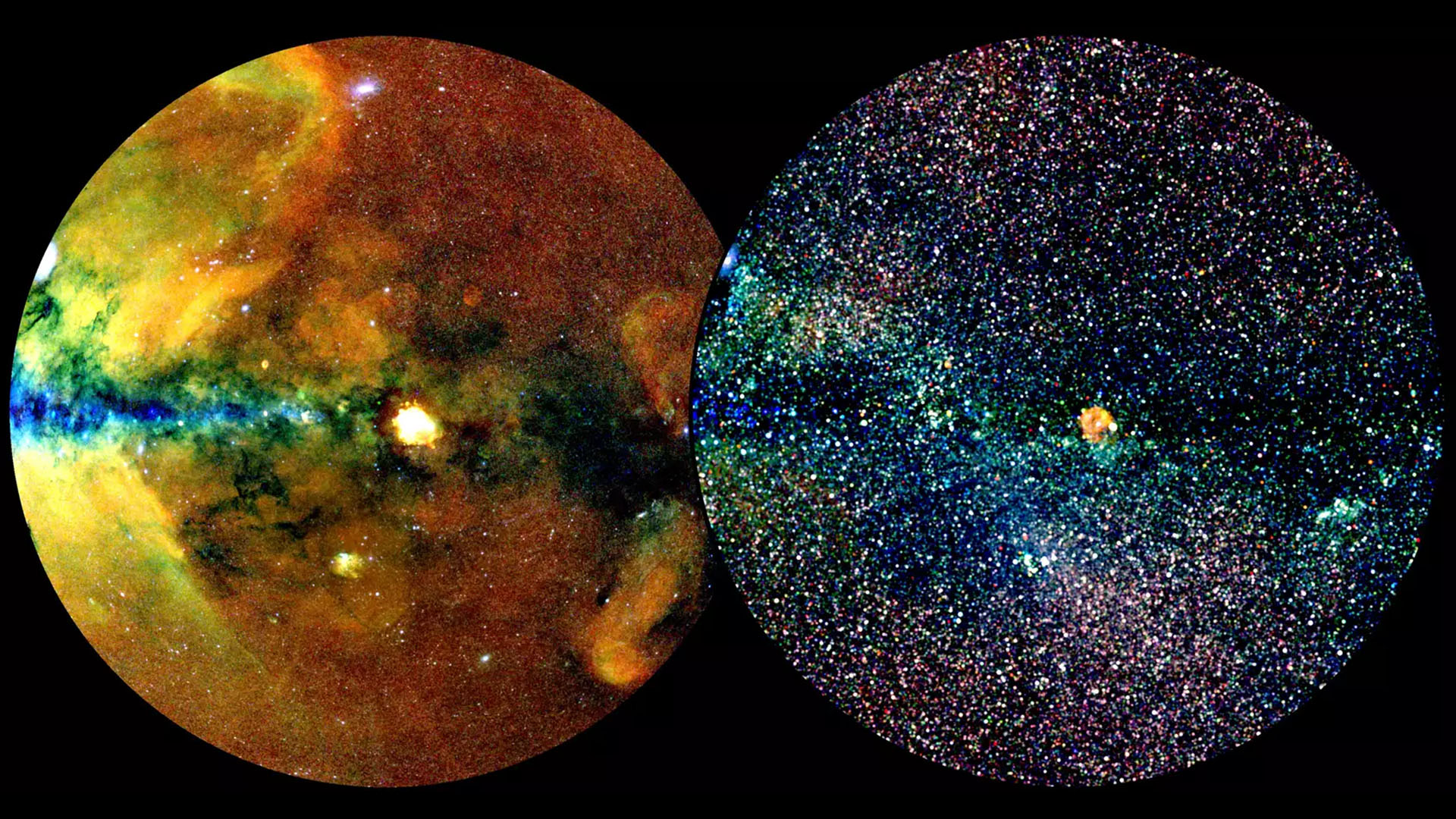More than 900,000 stars, galaxies and black holes revealed in most detailed X-ray map of the universe ever
Scientists using the eROSITA X-ray telescope have released a trove of data that reveals more than 900,000 objects in space, including 700,000 supermassive black holes and other 'exotic' objects.

Astronomers have unveiled the largest and most detailed X-ray map of the universe ever created. The newly released data reveal the light of more than 700,000 monster black holes, a mysterious "bridge" of gas connecting distant galaxies, and hundreds of thousands of other "exotic" deep-space objects.
The massive new X-ray data release comes courtesy of the eROSITA All-Sky Survey, a mission to scan the entire sky from December 2019 to June 2020 using the eROSITA X-ray telescope. In that time, the survey detected more than 170 million X-ray photons (particles of light) in the sky, which astronomers later identified as roughly 900,000 distinct objects in space, most of which are supermassive black holes, according to a statement from the Max Planck Society in Germany, which helped manage the mission.
"These are mind-blowing numbers for X-ray astronomy," Andrea Merloni, eROSITA principal investigator and lead author of a new paper describing the breadth of the mission's findings, said in the statement. "We've detected more sources in 6 months than the big flagship missions XMM-Newton and Chandra have done in nearly 25 years of operation," Merloni added, referring to the X-ray telescopes currently operated by the European Space Agency and NASA, respectively.
X-rays are a form of high-energy radiation that's invisible to the naked eye. Most X-ray emissions in space come from concentrations of extremely hot gases, which can arise from massive galaxy clusters; the remnants of supernova explosions, like the famous Crab Nebula; or active black holes that can outshine entire galaxies as hot, fast-moving matter plummets into their insatiable maws. Studying cosmic X-rays can not only suss out massive, high-energy objects like these but also reveal the overarching structure of the universe itself.
Related: Universe's oldest X-ray-spitting quasar could reveal how the biggest black holes were born
One of the most intriguing new discoveries to come from the survey is an enormous "filament," or bridge, of hot gas connecting two clusters of galaxies across more than 42 million light-years (more than 400 times the length of the Milky Way). The filament is thought to be a piece of the cosmic web — the vast superhighway of gas that feeds all galaxies in the universe and reveals the empty voids where elusive dark matter is thought to dwell. (The research has yet to be peer-reviewed.)
In addition to releasing the latest batch of data, researchers from the project have submitted more than 50 papers to scientific journals discussing a small fraction of eROSITA's new findings. This fresh ream of astronomical reading material adds to more than 200 papers already published on prior eROSITA discoveries, the researchers said.
Get the world’s most fascinating discoveries delivered straight to your inbox.
The full data release, along with free tools for reading it, are available courtesy of the eROSITA website. More data and scientific papers based on it are expected in the near future. In the meantime, eROSITA will continue stargazing from its home aboard the Spectrum-Roentgen-Gamma (SRG) space observatory, operated jointly by Germany and Russia.

Brandon is the space / physics editor at Live Science. With more than 20 years of editorial experience, his writing has appeared in The Washington Post, Reader's Digest, CBS.com, the Richard Dawkins Foundation website and other outlets. He holds a bachelor's degree in creative writing from the University of Arizona, with minors in journalism and media arts. His interests include black holes, asteroids and comets, and the search for extraterrestrial life.



